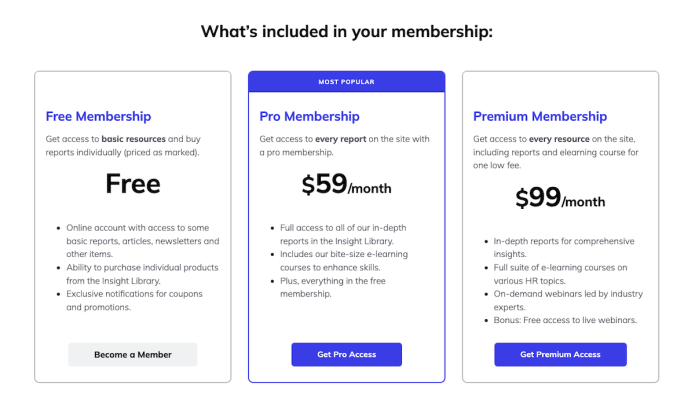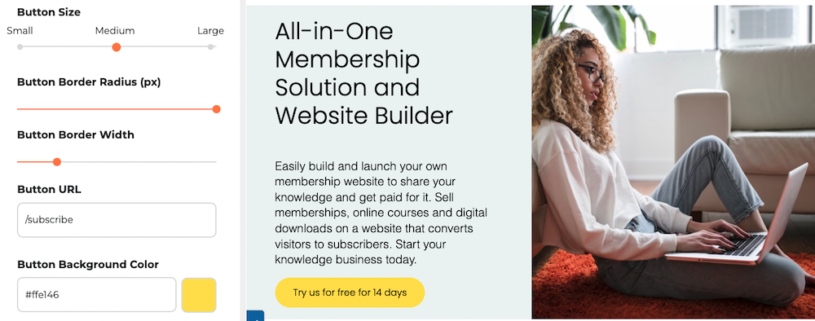
Starting an online magazine has never been easier. Whether you are an individual with a passion for a specific niche or a business seeking to expand its online presence, the wealth of affordable and user-friendly tools makes publishing an online magazine achievable for even a solopreneur.
Before embarking on building your online magazine, it's crucial to lay a solid foundation for success. In this article, we dig deep into things to consider and do before launching your online magazine.
Why are online magazines a viable business?
Running an online magazine is one of the simplest businesses available to niche experts, entrepreneurs and small businesses. A number of factors have made building and launching an online magazine a profitable venture:
- Easy-to-use, inexpensive online publishing tools that don't require any technical knowledge.
- The low cost of reaching a global audience means that niche subjects can now attract large enough audiences to become profitable.
- Improvements in search technology have resulted in niche sites being indexed and given high page ranking.
- Many new revenue generating money opportunities including subscriptions, courses, Google Adsense and affiliate marketing.
1. Functionality you need to start an online magazine
To create a functional and engaging online magazine, you'll need a website that incorporates various robust features and functionalities. Here's a list of essential website functionality:
- User-friendly design: Responsive design for optimal viewing on various devices (desktops, tablets, smartphones). Intuitive navigation with clear menus and categories.
- Content management system (CMS): Choose a user-friendly CMS platform that allows you to create and manage content without requiring extensive technical expertise. (e.g., WordPress, SubHub, Wix).
- Article management: Ability to create, edit, and publish articles easily. Support for multimedia content such as images, videos, and audio.
- Search functionality: Implement a robust search feature for users to find specific content quickly.
- Comment section: Enable comments on articles to encourage reader engagement and discussions.
- Archives and categories: Organize content into archives and categories for easy navigation. Tagging and labeling to enhance content discoverability.
- Subscription and membership: Options to offer multiple subscription levels.
- Payment processing: Ability to process recurring and one-off subscriptions and other website purchases.
- Member database: so you can capture your customers’ details.
- Ad spaces: Designated areas for displaying advertisements, optimized for various screen sizes.
- Analytics integration: Implement analytics tools (e.g., Google Analytics) to track website traffic and user behavior.
- SEO optimization: SEO-friendly URLs, meta tags, and headers for better search engine visibility.
- Social media integration: Social sharing buttons for readers to easily share articles.
2. Online Magazine Start-up Checklist
This checklist will take you through the top list of things you will have to do to set up an online magazine.
Planning your online magazine
- Define your niche
- Research the competition
- Choose a domain name
- Decide a monetization strategy
- Select a content management system
- Create a content plan
- Create the first content
- Build a team
Mocking up your layout & brand
- Design the website layout
- Plan the navigation
- Create your brand
Building the website
- Identify the publishing platform
- Specify the required functionality
- Designing your online magazine
- Include descriptive keyword-rich headlines
- Add a payment processor
Pre-launch checklist
- Test all the links
- Test payment processing
- Test member login
- Go live!
3. Planning your Online Magazine
Define your niche
Before considering setting up an online magazine, you must be very clear about what subject area you are going to cover and who your target audience is. On the Internet, it is much better to be the best in a narrow niche area than to be a generalist on a broad subject. For example, it is better to create an excellent site with a wealth of expert information about fly-fishing in Scotland than to create a broader fishing site with only a few articles covering each area of fishing.

Research the competition
Once you have an idea of your subject, check out who your competition will be. To do this, simply type the words that describe your subject area into Google search and see who appears at the top of the search results page. These are your competitors! Analyze their strategies and try to identify gaps in your chosen niche.
Choose a memorable domain name
Once you have decided on your subject, it is time to choose a domain name.
Select a unique and memorable domain name that reflects your magazine's brand and niche.
Ensure the domain is available and easy to spell.
Decide a monetization strategy
The best online magazines have diverse revenue streams. These can include paid subscriptions, store products, affiliate links and ad revenue.
GrowingForMarket, an online magazine for market farmers, has multiple revenue streams. Their magazine website provides some free content with the majority behind a subscription paywall. Their four subscription options each grant a different level of content access. Books and branded merchandise are sold through their online store. Additional revenue and sponsorship is sold through ad placement.
You might start with only one revenue stream but then introduce more as your online magazine builds traffic.
Select a content management system
Choose a user-friendly CMS platform that suits your technical skills and requirements. Make sure it includes the functionality you need with more advanced options for you to grow into. All-in-one membership platforms like SubHub making publishing magazine-style content easy. It's robust features lets you monetize
Create a content plan
Regularly publishing high quality, relevant content is essential to keep your subscribers engaged. Developing an editorial calendar is a must. Outline the frequency and types of content you'll publish. Plan for a mix of articles, multimedia content and features to keep readers engaged.
Ideally you should create a content plan for the first three months.
Make sure your content is targeted to your specific audience. Headlines and body content should include relevant keywords.
Create the first content
No site should launch without some high-quality articles or other content.
The first visitors to your website are important for building momentum. If they visit and there is nothing to read, they will never come back. We recommend writing at least 10 really good articles, preferably more, to have ready for the launch.
Build a team
While initially you may be the only content creator, you might want to consider recruiting guest contributors. New voices can bring fresh perspectives, diverse voices and additional expertise to your content.
You can promote your call for contributors on your website and social media platforms. Offering social media mentions and backlinks to their websites are free ways to provide recognition and incentives.

4. Mocking up your Design & Brand
Design the website layout
Begin by reviewing the layouts of successful online magazines. Identify what makes them visually appealing and reader-friendly. Be sure to incorporate the best elements in your own design. You want to give your readers an intuitive experience where they can easily navigate the site and find the content they want. Ensure that your site is responsive across different devices.
Plan the navigation
The navigation menu helps users find their way around your website. There are a number of best practices that you should follow to ensure readers have a positive experience. Your menus should be obvious, intuitive and consistent. Use descriptive and understandable labels for menu items and limit their number to avoid overwhelming users. Organize your navigation in a logical hierarchy with readable fonts.
Create your brand
Once you have a layout, it's time to think about your brand.
The design process is about choosing the colors, tone, personality, fonts, and imagery that are most appropriate for your audience and subject. For example, if your website is about organic gardening, greens and browns are more appropriate than bright primary colors.
5. Building the Website
Identify the publishing platform
One of the most important decisions you will make will be which software or service you use to run your website. For non-technical individuals, choosing an all-in-one platform is the best option. These platforms offer a comprehensive solution of multiple features, integrated payment processor, security, support and more.
Instead of juggling multiple tools and platforms for different website functions, an all-in-one solution provides a unified dashboard for centralized management.
These platforms are also designed to scale with the growth of a website or business, offering additional features and resources as needed.
Specify the required functionality
An online magazine needs a few key bits of functionality. The most important application is the content management system or CMS. This enables non-technical people to add articles, images, and other content to their websites without needing any development skills. A good CMS application is critical to your success.
There is other functionality you might want depending on your magazine model:
- Newsletter application
- Payment processor
- Course builder
- Built-in store
- User forum
Designing your online magazine
Once you have chosen the platform and functionality, it's time to build your website.
Using an all-in-one platform, you have two design options. You can choose a pre-designed template as a starting point and then apply your branding. Or build your homepage by selecting and arranging content blocks to meet your specific needs.

Include descriptive keyword-rich headlines
Your headlines and copy should be descriptive and include relevant keywords to your niche. This makes it easier for readers to understand want the content is about and improves user engagement. Consistent use of descriptive keywords in your headlines can contribute to building your brand identity.
When users see a headline that clearly communicates what the page is about and matches their search intent, they are more likely to scroll and click. Keyword-rich headlines are also necessary for SEO impact.
Connect payment processor
All-in-one website solutions, like SubHub, are already integrated with payment processors like Stripe and PayPal. This makes accepting online payments safe and secure. You just need to set up your accounts and add the 'keys' to your website.
6. Pre-Launch Testing
Before launching your website, make sure to thoroughly test all aspects of your website. Ask friends and family to subscribe and provide feedback about their experience.
Test all links
Test all of the links. Broken links create a negative user experience and impact SEO ranking.
Test payment processing
Put your credit card details into your website and make a purchase so you can understand the buying process. Does it work? Is the sign up process clear and streamlined? Don't present too many options as that delays the decision making process.
Test member login
After sign up, log in as a member and test the user experience. Navigate through the content. Confirm that the site is structured and logical. Test every possible scenario before going live with the site.
Go Live!
After launching your site, continue to follow your content schedule and regularly add new and relevant content. Reach out to other website for backlinks. Regularly post on social media to build your following. Ask members for feedback and diversify what you publish based on what they say. Remember this is just the beginning of growing a profitable online magazine.




